2019 Projects
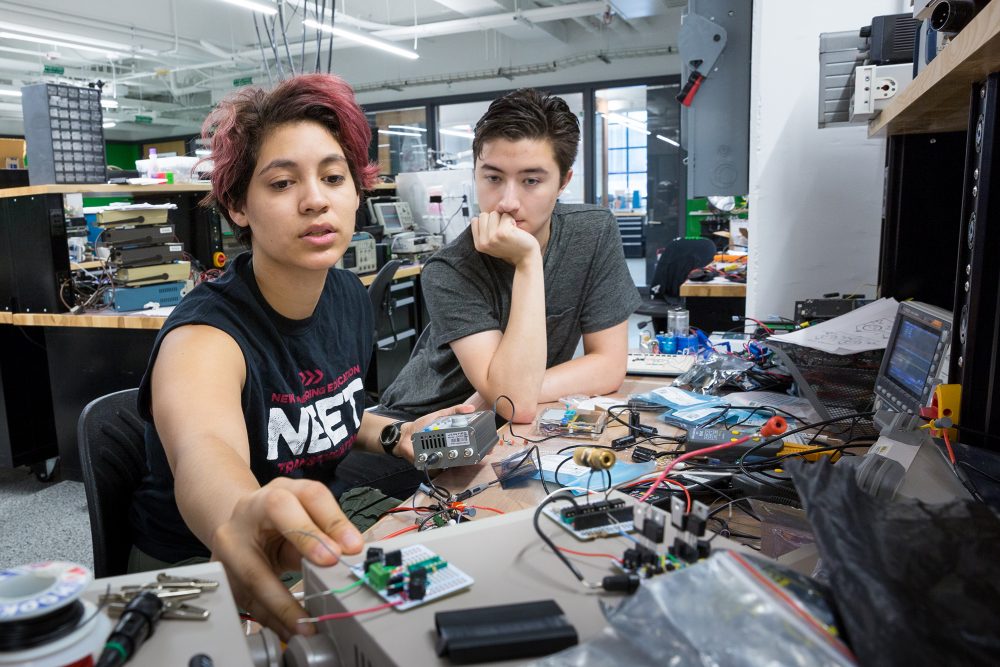

 |
Janak Agrawal ’19Electrical Engineering and Computer Science Advisor: Francis O’Sullivan, Senior Lecturer, MIT Sloan School of ManagementDirect Supervisor: Apurba Sakti, Research Scientist, MIT Energy InitiativeSponsor: Lisa Doh Himawan ‘88 Investigation of the techno-economics of hybrid systems using gas turbines and advanced energy storage systems My research focuses on the impact of pairing an advanced energy storage solution with a conventional gas turbine/combined cycle plant to increase fuel efficiency, reduce operation costs, and expand the plant’s energy supply portfolio. For our initial analysis, we used python optimization packages and data from various gas-turbine plants in California and studied the impacts of adding an energy storage device to such a system. We found that depending on the characteristic of the plant, adding an energy storage device could result in significant cuts in carbon emissions, significant reduction in operation costs, or both. |
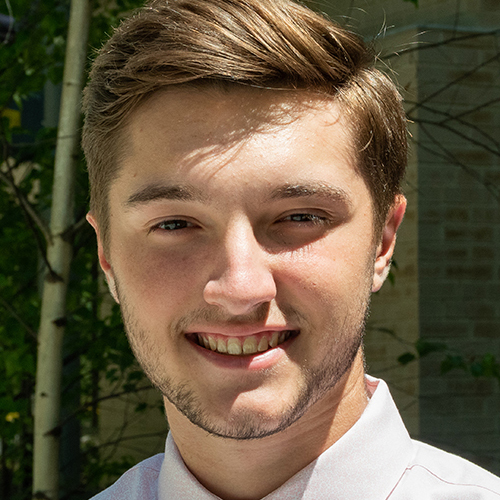 |
Nicholas Aiello ’22Chemical Engineering Advisor: Fikile Brushett, Cecil and Ida Green Career Development Chair; and Associate Professor, Chemical EngineeringDirect Supervisor: McLain Leonard, Graduate Student, Chemical EngineeringSponsor: Chevron Using wettability principles to improve chemical reactors for carbon dioxide reduction A current issue in the world today is balancing energy output while also considering its effect on the environment. Our lab has carbon dioxide reactors that can help balance this issue. To further improve the reactor, we used wettability research, where we explored how certain reactor products interacted with the reactor materials. Once we had a general idea of the surface properties and how those products interacted with the reactor, we tried grafting/coating a salt onto the surface of the electrode to see if that made the surface more non-wetting and thus allow the reactor to be more efficient. We found that it did, in fact, improve the performance of the reactor, and we are continuing the research to further improve these methods. |
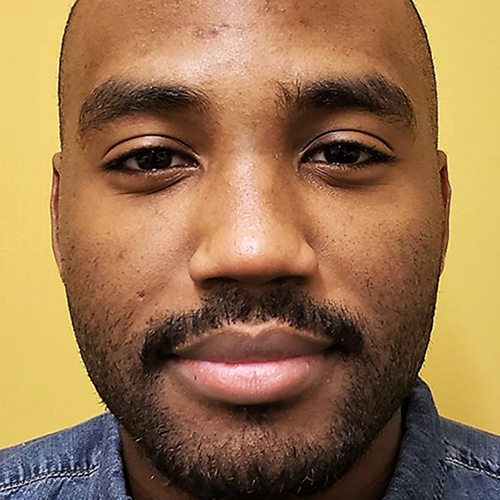 |
Issa Rais Aoudou Bassirou ’21Chemical Engineering Advisor: Yang Shao-Horn, W.M. Keck Professor of Energy, Materials Science and EngineeringDirect Supervisor: Graham Michael Leverick, Graduate Research Assistant, Mechanical EngineeringSponsor: Lisa Doh Himawan ’88 Measuring viscosity dependence on temperature and the relationship between energy and molar ratio in LiTFSI-DMSO solutions Lithium-ion batteries, which are the most common batteries on the market, work by carrying charge between electrodes using a lithium-salt electrolyte. Understanding the electrical and mechanical properties of potential electrolytes helps us to produce safer and more efficient batteries. My project consisted of preparing lithium triflate solutions of varying concentration and measuring how the solutions’ viscosity changed with temperature, to illustrate how activation energy of solvation changes with concentration. This research allowed me to better understand the movement of charge carriers in lithium-ion solutions with organic solvents. Thanks to MITEI, I was also able to obtain tangible laboratory experience and the opportunity to apply the theories I learned in the classroom to the lab. I plan to continue working on improving battery efficiency and safety in the near future. |
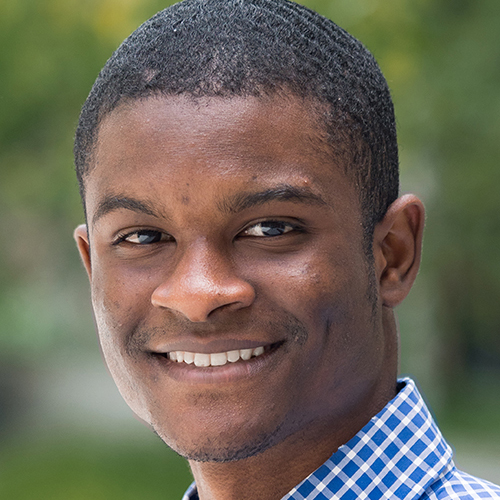 |
Mohamadou Bah ’21Electrical Engineering and Computer Science Advisor: Anuradha Annaswamy, Senior Research Scientist, Mechanical EngineeringDirect Supervisor: Rabab Haider, Graduate Student, Mechanical EngineeringSponsor: ExxonMobil A service-oriented architecture for the electric distribution grid Current trends point toward an electric grid that will be characterized by a large number of distributed energy resources (DERs). DERs encompass assets such as solar panels, electric vehicles, and batteries. At high levels of penetration, DERs, which may be intermittent, disrupt conventional grid planning and hamper the real-time control of the grid. I developed a service-oriented architecture for the distribution grid so that grid operators (i.e., utilities and aggregators) could request “services” (i.e., load shifting, coordinating retail electricity markets, microgrid islanding) from intelligent and autonomous DERs. My work demonstrates that the coordinated control of DERs could plausibly and significantly improve the resiliency of electric grids and maximize the value of existing assets. My research furthered my understanding of electric grids, multi-agent systems, and the architectures needed to manage them. |
 |
Clio Batali ’21Materials Science and Engineering Advisor: Tonio Buonassisi, Professor, Mechanical EngineeringDirect Supervisor: Shijing Sun, Research Scientist, Mechanical EngineeringSponsor: Shell International Optical properties measurement and investigations on thin-film stability for photovoltaic materials I worked in the MIT Photovoltaics Research Laboratory on quantifying and improving the lifespan of organic-inorganic hybrid perovskite solar cell technologies. I ran degradation experiments on thin-film materials of different perovskite compositions, and then quantified the materials’ optical properties through direct measurement (like absorption) and derived characteristics (like band gap) in order to see how different compositions behaved under conditions of high heat and humidity. I used MATLAB and ultraviolet-visible spectrophotometry to catalog the materials’ structural changes and automate the data analysis process. This experience enabled me to determine the relative structural/photoelectronic changes of different thin-films and learn valuable theory for semiconductor physics—and taught me how to tie it all together with optical observations to create a complete picture of the degradation process. |
 |
Benjamin Bennington-Brandon ’20Mechanical Engineering Advisor: John Lienhard, Director, Abdul Latif Jameel Water and Food Systems Lab; and Abdul Latif Jameel Professor of Water and FoodDirect Supervisor: Quantum Wei, PhD Candidate, Mechanical EngineeringSponsor: Chevron Osmotic backwash in batch reverse osmosis The purpose of this project was to experimentally verify an energetic model of the osmotic backwash in a pilot batch reverse osmosis (RO) system. Batch RO has the potential to replace traditional RO processes for water desalination on a large scale because it uses less energy and drives costs down. Batch RO is able to reduce energetic costs by varying feed pressure over time while maintaining the same production volume. During my UROP, I used video analyzation to calculate the volume and flux of osmotic backwash that occurs in the system during reset phases. We found that the original energetic model overestimated the amount of osmotic backwash, meaning that even less energy was used in the reset phase than originally thought. This UROP gave me great lab experience, and I was able to work on a project with potential to help a lot of people. |
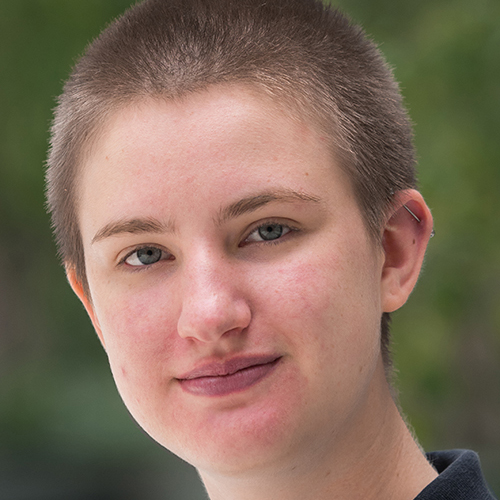 |
Jane Bonesteel ’22Chemical Engineering Advisor: Fikile Brushett, Cecil and Ida Green Career Development Chair; and Associate Professor, Chemical EngineeringDirect Supervisor: Katharine Greco, PhD Candidate, Chemical EngineeringSponsor: Shell International Heat treatment of carbon electrodes for application in flow cells Redox flow batteries are an emerging technology in the area of energy storage. They have a lot of potential for a broad array of applications, but there is still a lot of research to do. Scientists have yet to find the most effective active chemical species, electrodes, flow systems, membranes, etc., to apply to these batteries. My project focused on the electrodes used in flow batteries. The most common electrodes used today in these cells are carbon materials. By heat treating these electrodes at varying temperatures for varying amounts of time, we were able to improve the performance of these cells. My work specifically involved building model cells, pumping different solutions through them, and taking electrochemical measurements. We hypothesized the mechanisms by which this heat treatment increases performance and confirmed our hypotheses by building and running cells with varying chemistries. By exploring the way that these redox systems react to differences in build parameters and electrode treatments, we were able to expand the knowledge base surrounding redox flow systems. I will continue this research in the Brushett Lab, where we will proceed to explore other system chemistries and how they interact with our treated electrodes. |
 |
Grace Bryant ’21Urban Science and Planning with Computer Science Advisor and Direct Supervisor: David Hsu, Associate Professor, Urban and Environmental PlanningSponsor: Alfred Thomas Guertin ’60 Political spending on utility regulators This project was seeking to understand if political spending has a measurable effect on the function of public utility commissions. During the UROP, I was working on gathering data surrounding commissioner employment records—before and after their time as commissioner—to try to determine if there is a correlation between commissioner job experience and rate setting for utility companies. From this project, I gained insight into the different ways that data can be gathered, and I also became more aware of how utilities are provided. |
 |
Shuxin Chen ’22Chemical Engineering Advisor: William Green, Hoyt C. Hottel Professor, Chemical EngineeringDirect Supervisor: Mica Smith, Postdoctoral Associate, Chemical EngineeringSponsor: ExxonMobil Investigation of PAH formation in 2-Naphthyl radical and acetylene systems under hydrogen abstraction During my summer, I had the opportunity to work with Dr. Mica Smith in the Green Laser Lab on combustion reactions. Since combustion processes have been introduced into a variety of fields, recognizing and quantifying the extents of combustion reaction mechanisms have become increasingly important. Alongside their thermal products, combustion reactions also conceive particulates and other pollutants, namely polycyclic aromatic hydrocarbons (PAH). Through a novel reactor unique to the MIT Green Group, we explored the PAH formation and reaction mechanisms of napththyl radical and acetylene in order to better understand the mechanics of soot production. |
 |
Zachary Chin ’22Chemistry Advisor: Yogesh Surendranath, Paul M. Cook Career Development Associate Professor, ChemistryDirect Supervisor: Corey Kaminsky, Graduate Research Fellow, ChemistrySponsor: Friends of MITEI UROP Use of graphite-conjugated catalysts to map the potential drop in the electrochemical double layer with operando AP-XPS Developing improved electrochemical devices, such as fuel cells and electrolyzers, requires a precise understanding of the charged interfaces where electrical and chemical energy are interconverted. This project aims to analyze the nature of the fundamental phenomena governing these interfaces (specifically, the electrochemical double layer) using advanced spectroscopic techniques in conjunction with novel graphite-conjugated catalysts. The main focus of my UROP experience was on synthesizing chemical precursors for future use in this spectroscopic analysis. Over the course of my UROP, we refined chemically efficient synthetic pathways to these precursors, and then produced sufficient quantities of these compounds to allow for the spectroscopic study to start in late 2019. Through this UROP, I improved my laboratory technique and strengthened my knowledge in the field of synthetic organic chemistry, and gained incredibly valuable research experience that will aid me in my future academic endeavors. |
 |
Jessica Cohen ’22Materials Science and Engineering Advisor: Karthish Manthiram, Warren K. Lewis Career Development Professor, Chemical EngineeringDirect Supervisor: Kindle Williams, PhD Student, Chemical EngineeringSponsor: Friends of MITEI UROP Electrochemical benzylic C-H activation: Investigating the mechanisms behind xylene oxidation During my UROP, I explored plausible chemical reaction pathways for benzylic C-H activation in electrochemical xylene oxidation. Electrochemical xylene oxidation has the potential to benefit both industry and the environment through the possibility of lower production costs of valuable chemical products, such as terephthalic acid, and the sustainable creation of such chemicals through renewable energy generation. In this research, I acquired many useful lab and data analysis techniques, and learned extensively about electrochemistry and catalytic pathways. By beginning to understand that there are still many unknown factors in electrochemistry, such as the various ways that reactions can proceed on a catalyst surface, I have become even more fascinated by the field and by everything we don’t know yet. This research has helped me to gain a better perspective of electrochemistry and of the scientific method, in general. Performing this research, thanks to help from MITEI, has given me appreciation for sustainable solutions. I will continue to work on the project in the upcoming year. |
 |
Alan Dang ’19Chemical Engineering Advisor: Francis O’Sullivan, Senior Lecturer, MIT Sloan School of ManagementDirect Supervisor: Apurba Sakti, Research Scientist, MIT Energy InitiativeSponsor: Friends of MITEI UROP Techno-economic analysis of the costs of advanced energy storage systems: Energy Storage Technology Assessment Tool (ESTAT) development This project aims to create a web-based cost/benefit assessment tool to evaluate the economic viability and scalability of various existing and emerging energy storage technologies, such as lithium-ion batteries. During this UROP, I refined and updated the process-based cost model for flow batteries, which are targeted for use in stationary, high-energy applications, such as electrical grids and renewable energy storage, due to their ability to independently scale the amount of energy they store and the rate at which they dissipate that energy. This is a consequence of the electrolyte providing energy to these battery systems being held externally to the reactor stack dissipating this energy. Through this research, I have found that flow batteries only seem to become economically viable at high annual production rates with specifications that require advancement of various components of the batteries. |
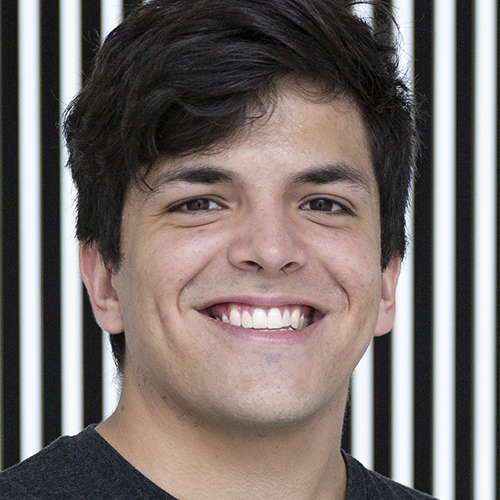 |
Alex Encinas ’21Mechanical Engineering Advisor: Tonio Buonassisi, Professor, Mechanical EngineeringDirect Supervisor: Shijing Sun, Research Scientist, Mechanical EngineeringSponsor: Friends of MITEI UROP High-throughput electrical characterization of thin-film solar cells Solar cell technology has been consistently increasing in efficiency while decreasing in cost. However, we need to speed up this process in order to effectively provide the world with clean, sustainable energy in our fight against the climate crisis. The MIT Photovoltaics Research Laboratory has been working to advance the stability and efficiency of perovskite thin-film solar cells. In the past, the lab analyzed degradation through visual change such as shifting colors. For our project, we wanted to record other important characteristics that change during the degradation process, and at what rate. Over the semester, I worked to develop a method to electrically characterize the films before, during, and after degradation. Effectively testing many perovskite cell compositions requires a high-throughput method of testing in order to converge to reveal the most efficient and stable thin-film solar cells. This project taught me about teamwork, the electrical behavior of solar cells, and the challenges that plague the renewable energy field. I hope to continue working in this industry to make a lasting impact. |
 |
Michal Gala ’20Chemical Engineering Advisor: Karthish Manthiram, Warren K. Lewis Career Development Professor, Chemical EngineeringDirect Supervisor: Nikifar Lazouski, Graduate Student, Chemical EngineeringSponsor: National Rural Utilities Cooperative Finance Corporation (CFC) Role of proton source in electrochemical ammonia synthesis I am working on elucidating the role of proton source in electrochemical ammonia synthesis. This project is important because the currently available methods of ammonia synthesis require high temperatures and pressures, which our system eliminates in favor of electricity. Over the course of my UROP, we made significant progress in understanding this problem, and we are now collecting publication-quality data. We identified which compounds are active in the electrochemical ammonia synthesis process and which are not, and managed to connect this behavior to their solvent properties. This experience cemented my desire to go to graduate school after college to continue working on early-stage energy conversion technologies. I also learned a lot more about electrochemistry and the technical details of existing technologies. |
 |
Estrella Garcia ’21Computer Science, Wellesley College Advisor: Robert Armstrong, Director, MIT Energy Initiative; and Chevron Professor of Chemical EngineeringDirect Supervisor: Dharik Mallapragada, Research Scientist, MIT Energy InitiativeSponsor: Shell International Economic assessment of hydrogen technologies participating in electricity markets For my UROP, I studied electrolytic hydrogen production based on electricity sourced from a future low-carbon grid. Hydrogen is currently produced by a process called steam reforming, which releases about 10 tons of carbon dioxide per ton of hydrogen produced. Using past wind data, fixed technology costs, and operating parameters, we ran an optimization model to solve for the minimum cost of producing hydrogen for 1,487 different locations across the U.S. My job was to manage and run the optimization model on the large dataset. I learned how to use and run code on a cloud network, which is an opportunity that I may not have experienced in a classroom setting. I also created visualizations to help interpret the large set of results. We found that certain areas in the U.S. that have better wind energy quality can produce hydrogen at a relatively low price. |
 |
Luis Garcia ’20Mathematics Advisor and Direct Supervisor: David Hsu, Associate Professor, Urban and Environmental PlanningSponsor: Alfred Thomas Guertin ’60 Political spending on electric utility regulators In the United States, there are utility companies that provide electricity, gas, and water services to households for a certain rate. Public service commissioners regulate the rates that utility companies charge at the state level. In this project, we wanted to see if the lobbying done by utility companies in the elections of state representatives (who, in turn, appoint the public service commissioners) had an effect on allowed utility rates. To determine whether there is a relationship between lobbying and allowed rates, we created a regression model. I worked on collecting information about campaign contributions from utility companies to candidates for state offices, such as governor, senators, and representatives. I also cleaned and prepared the dataset for regression analysis. Through this UROP, I improved my research and data analysis skills. |
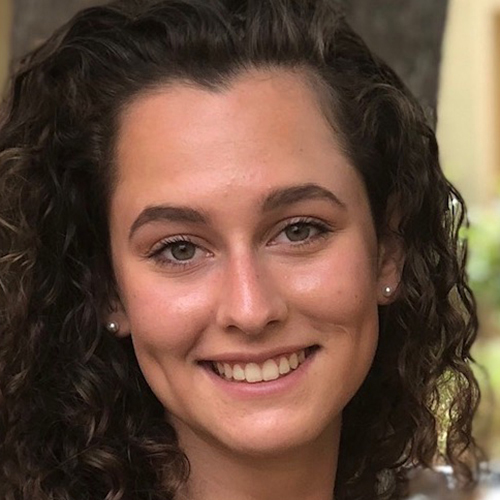 |
Elley Goldberg ’22Economics Advisor: Jonathan Grubar, Ford Professor, EconomicsDirect Supervisor: Daniel Pomeroy, Managing Director and Senior Policy Advisor, MIT Policy Lab at the Center for International StudiesSponsor: Friends of MITEI UROP MIT research to policy mapping Through MIT’s Policy Lab at the Center for International Studies, I worked on increasing the connection between MIT research and public policy with the goal of aiding the development of evidence-based policy. Currently, many researchers are primarily focused on having their research published in academic journals, and policy makers are presented with biased information from lobbyists. In an attempt to fix this disconnect between academia and policy, we produced policy maps to connect relevant actors in public policy with specific areas of MIT research. We also developed a methodology for scanning government websites and news sources to identify opportunities for researchers to interact with public policy. I focused on electricity grid research and policy throughout this process, which has allowed me to better understand the complexities of policymaking as a whole, as well as those of the intersection between technology and policy. I also realized the breadth of impact MIT stands to have on public policy if we can improve the connection between academia and policy, which makes me excited for the future of this project. Advisor: Leslie Norford, Professor, ArchitectureDirect Supervisor: David Birge, Research Scientist, ArchitectureSponsor: Friends of MITEI UROP Mesoscale energy modeling for city regions While most past research is focused on modeling large, macro scale transitions to renewable energy, my research has focused on smaller, regional transitions to create more specific strategies for renewable energy implementation. Because any national or global transition to renewable energy is dependent on the transition of the smaller regions within, region-specific modeling is necessary to achieve global renewable energy goals. Throughout the semester, I developed costing functions in Python to analyze the financial impact of different energy storage and generation strategies. In the future, I will continue building our library of functions to allow us to price out more complex strategies, such as smart-grid technologies. By researching and writing these functions, I was exposed to new technologies that can aid transitions to renewable energy and learned the financial complexity of electricity generation and storage. |
 |
Jackson Gray ’21Electrical Engineering and Computer Science Advisor: James Kirtley, Professor, Electrical EngineeringDirect Supervisor: William Lynch, Research Specialist, Research Laboratory of ElectronicsSponsor: Shell International Switched capacitor battery balancing Cell voltage balancing circuits are used on all production lithium-ion battery packs used in electric vehicles and as energy storage for the power grid. As the cells in a battery pack age differently, battery packs without balancing circuits may come out of balance over the course of its use, and become damaged or potentially dangerous. If the aging becomes significant enough, even packs with more passive balancing circuits may have a hard time keeping the pack in balance, reducing the useful capacity of the pack. A powerful enough balancing circuit may extend the useful lifetime of larger multicell battery packs. Over the summer I worked on developing switched capacitor battery balancer circuits, investigating component choice and topology to improve power density. I got to work with and learn about the high-frequency performance of different types of capacitors, transistors, and gate drive circuits. |
 |
PJ Hernandez ’20Electrical Engineering and Computer Science Advisor: James Kirtley, Professor, Electrical EngineeringDirect Supervisor: William Lynch, Research Specialist, Research Laboratory of ElectronicsSponsor: Equinor Extreme battery operation and system balancing for lifetime preservation Batteries are made up of smaller batteries, called cells. Each of these cells carries approximately the same amount of charge, but due to manufacturing differences, they may have different lifetimes. When one of these cells expires, so does the entire battery, even if other cells would have lasted. Our goal was to build a circuit that could shuttle voltage from cells with longer expected lifespans to cells with shorter expected lifespans in order to extend the life of the whole battery. My job was to build and test these circuits by using different combinations of parts and designs to see which approach was most efficient. We found that our goal is indeed possible—we were able to get high efficiency circuits on generic parts. We also discovered that high inductance parts were less effective in our circuit. I learned a lot about circuit testing, especially good practices to prevent explosions and fires, as well as how to handle parasitic inductance in a circuit in order to make it more efficient. |
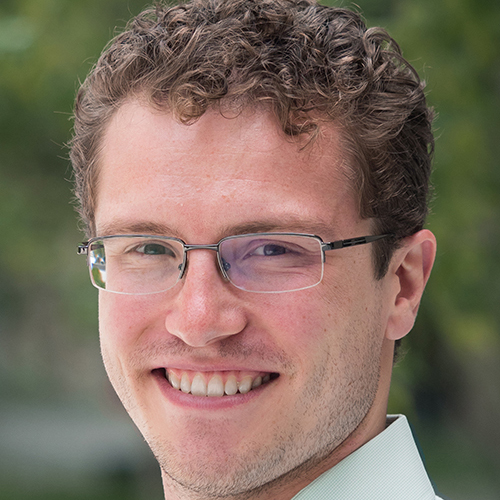 |
Jesse Hinricher ’19Chemical Engineering Advisor and Direct Supervisor: Fikile Brushett, Cecil and Ida Green Career Development Chair; and Associate Professor, Chemical EngineeringSponsor: ExxonMobil Exploration of alkaline polysulfide aqueous redox flow batteries for low-cost energy storage Renewable sources of energy like solar and wind can meet our global energy needs when coupled with grid-scale energy storage. One such storage technology is redox flow batteries, which are promising due to their durability, performance, and scalability. Typical redox flow batteries employ rare and expensive vanadium. Replacing this expensive material will lower system costs. Sulfur is earth-abundant and inexpensive since it is a byproduct of petroleum refining. To this end, I performed basic electrochemistry on a polysulfide flow battery. I characterized the electrolytes using cyclic voltammetry and microelectrode voltammetry. I assembled research-scale flow cells and conducted a plethora of system-level experiments including impedance spectroscopy, polarization, state of charge swing studies, rate studies, and duration studies. I enjoyed working with my supervisor to plan experiments and expand the scope of our project. My UROP furthered my understanding of electrochemistry and my goal of going to graduate school to research batteries. |
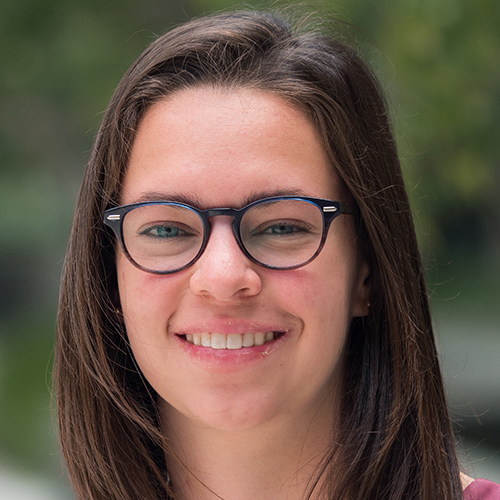 |
Sheila Kennedy-Moore ’21Mechanical Engineering Advisor: Amos Winter, Ratan N. Tata Career Development Professor, Mechanical EngineeringDirect Supervisor: Julia Sokol, PhD Student, Mechanical EngineeringSponsor: ExxonMobil Novel dripper designs for low-cost, low-energy drip irrigation systems This summer I worked in the Global Engineering and Research Lab on an energy efficient drip irrigation system that is more affordable for subsistence farmers around the world. The overall goal of the project is to design a drip irrigation system that can be powered off-grid with solar. I worked on using experimental tests to develop a better understanding of the components of the drip emitters that are difficult to model, and on comparing different methods to find a more efficient way to prototype. I was able to learn more about the components of the drip emitter, and to find a potential option for prototyping the drip emitters quickly. My experience allowed me to develop my skills as a researcher and an engineer. I’m grateful to have had the opportunity to learn and contribute to this project. |
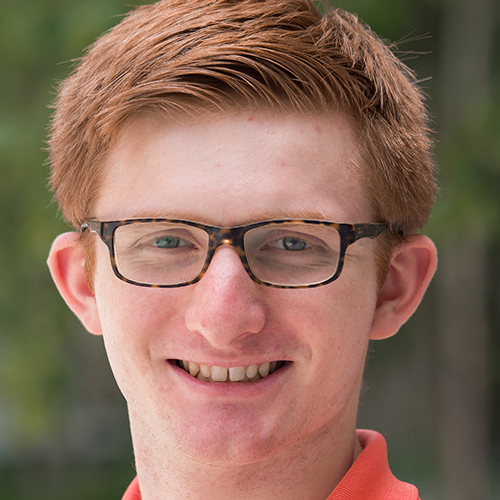 |
Christopher Kiel ’22Materials Science and Engineering Advisor: JJ Hu, Associate Professor, Materials Science and EngineeringDirect Supervisor: Skylar Deckoff-Jones, PhD Student, Materials Science and EngineeringSponsor: Shell International Producing strained ultra-thin materials on arbitrary substrates In the energy field, researchers are finding ways to use 2-dimensional materials to make devices smaller and more efficient. The level of strain in the material, which is linked to photonic and electronic characteristics, is a desirable property to optimize. During the course of my research, I developed a new method for inducing strain in materials, such as graphene, before depositing the films onto common substrates. I used techniques including photoluminescence measurements and raman spectroscopy in my experiments. This new method works, and we are now making further improvements to the method in order to reach literature values of strain. If we are successful, this could be an inexpensive laboratory method applicable for device fabrication at a range of scales. |
 |
Alex Liu ’22Chemistry Advisor: Yogesh Surendranath, Paul M. Cook Career Development Associate Professor, ChemistryDirect Supervisor: Onyu Jung, Graduate Research Assistant, ChemistrySponsor: Jerome I. ’51 ScD ’56 and Linda Elkind Exploring the effects of pH on hydrogen evolution reaction During my UROP, I attempted to determine the kinetics of the hydrogen evolution reaction (HER) on a gold electrode at different pH values. In order to accomplish this, I prepared extremely pure reaction conditions (via electropolishing, mechanical polishing, and cleaning with strong oxidants and acids) and took constant-potential Tafel data at pH 13 and 12; this data will then be combined with data from other pHs to generate a conclusive idea of the actual chemical kinetics. While my data should be repeated more times to decrease the uncertainty, I was able to see that HER was promoted more strongly at pH 13 than pH 12. This is surprising from a general chemistry perspective, as the reaction should be more thermodynamically favored under acidic conditions. My results likely suggest that the HER mechanism is more complicated than we had initially thought. From this UROP, I’ve learned how to keep my samples extremely pure, gather and better understand electrochemical data, and feel more comfortable working in a lab. |
 |
Alicia Nimrick ’20Architecture Advisor: Christoph Reinhart, Professor, ArchitectureDirect Supervisor: Alpha Yacob Arsano, PhD Student, ArchitectureSponsor: Shell International Development of educational tools for analyzing building energy performance The U.S Department of Energy provides building reference models for energy simulation, but these models are abstract and scientific. As a result, it is often challenging for designers to translate a building design into a thermal model for energy performance evaluation. The goal of my work was to provide architects with a better understanding of available energy modeling techniques to augment their design processes. I created a realistic design example that showcases energy modeling for design professionals. Through reverse abstraction, a reference thermal energy model for a medium-sized U.S. office building is converted to architectural floor and façade layouts for a building that can accommodate 268 people. |
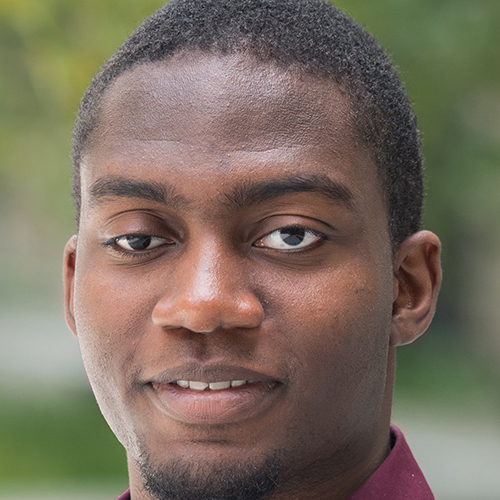 |
Jared Prince ’22Mechanical Engineering Advisor: Amy Glasmeier, Professor, Economic Geography and Regional PlanningDirect Supervisor: Darien Williams, Graduate Student, Urban Studies and PlanningSponsor: ExxonMobil End the catastrophic failures in the power generation system My research addressed the failures in the U.S. power generation system. Our team employed qualitative methods of data analysis on detailed National Transportation Safety Board reports concerning significant failures in the U.S. natural gas pipeline system to detect any patterns that accompanied such overt failures. This helped us refine our search for patterns within larger databases of less in-depth reports from the Pipeline and Hazardous Materials Safety Administration. There were many different parts of the data that I could have focused on analyzing, but the rabbit hole I dove into led to a single conclusion: people mess up. However, instead of just accepting that fact and looking to better training and stricter regulation as an answer, a deeper analysis revealed just how much human errors were exacerbated by other, pre-existing problems that were latent in a system. By studying the nature of the relationship between human error and pre-existing system problems, I came up with suggestions to remedy this. This project helped me realize that I enjoy answering questions and solving problems with real-world implications instead of just sifting through idealized examples for a class. This experience has made me more likely to go to graduate school and do research. |
 |
Jonathan Sampson ’20Mechanical Engineering Advisor: John Heywood, Professor, Mechanical EngineeringDirect Supervisor: Emmanuel Kasseris, Research Scientist, Mechanical EngineeringSponsor: ExxonMobil Biomass to electricity system with novel producer gas cleanup I worked on a small-scale biomass-to-electricity system alongside researchers in the Plasma Science and Fusion Center and Sloan Automotive Laboratory. Many similar systems employ gasification to turn solid organic biomass into a gas fluid that can be used to generate electricity. However, this producer gas must be cleaned of hydrocarbonic tars before it can be used for power generation, or the tars may condense and damage engine components. Clean-up is typically done with expensive chemical processes. Our system removes tars by burning gas at high temperatures significantly above the tar dew point, at rich air-fuel ratios in an internal combustion engine. By burning the gas at high temperatures, tars are vaporized in gaseous form before they can condense and ruin engine hardware. I worked on sizing analyses of this system, as well as cost calculations and project financing, showing cost savings in our system benchmarked against similar systems. This project was a great opportunity to do research that can change the lives of people without access to electricity in off-grid communities, which is a huge passion of mine. |
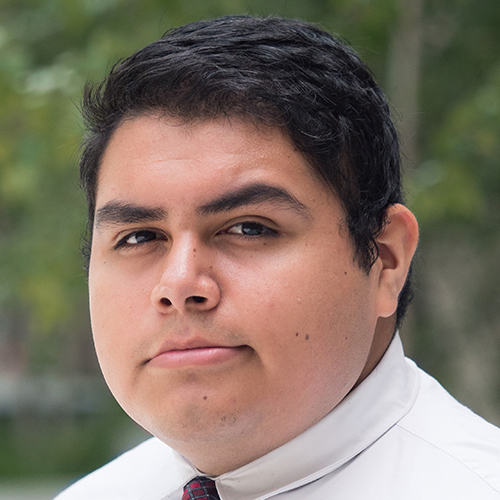 |
Gerardo Segura ’22Electrical Engineering and Computer Science Advisor: Amy Glasmeier, Professor, Economic Geography and Regional PlanningDirect Supervisor: Darien Williams, Graduate Student, Urban Studies and PlanningSponsor: ExxonMobil Critical resilient interdependent infrastructure systems and processes: Vulnerabilities of U.S. natural gas pipeline infrastructure This project used a novel approach to understand systemic patterns across natural gas pipeline incidents in the United States. Using qualitative coding and analysis, our team tested James Reason’s human error theory to understand the sets of latent, or delayed, human errors that enable active errors to precipitate a major explosion or leak. Through use of this method, our investigation revealed a richness of causal details unreported in higher-level administrative datasets. I primarily coded NTSB accident reports and discussed findings with the team to develop our theory. Through this project, I gained an understanding of the richness provided by interdisciplinary and mixed methods investigations. |
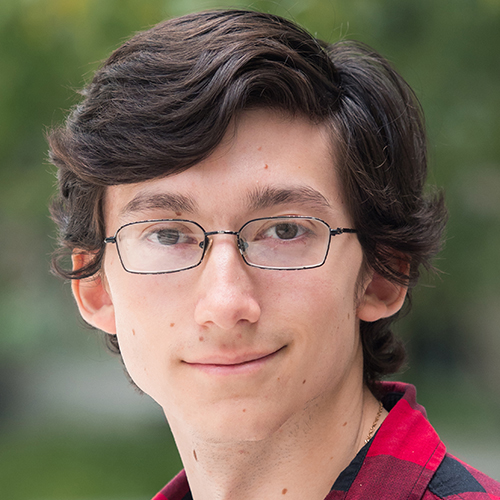 |
Carlos Sendao ’20Chemical Engineering Advisor and Direct Supervisor: Jean-François Hamel, Lecturer, Chemical EngineeringSponsor: Chevron Production of a sustainable biodiesel: Impact of fermentation on ethanol production from yeast The work I did in the Hamel Laboratory focused on constructing a small reactor capable of fermenting modified S. cerevisiae (baker’s yeast). We sought to find the maximum amount of ethanol produced from S. cerevisiae from different reacting conditions, which involved varying the amount of nutrients and sugars being fed into the reactor. As high sugar feeds into the reactor, S. cerevisiae produces ethanol, which has bio-fuel capabilities when extracted. Throughout the experiment, we collected data on dry cell weight from fermentation, ethanol concentrations in the effluent, and the optical density of cells. We also collected data from a continuous sampling instrument called a mass spectrometer. The mass spectrometer allowed us to measure the carbon dioxide that was released from fermentation, which allowed us to a produce a mass balance about the reactor. The reactor will be used in future classes where students will learn about continuous reactor conditions and operations. |
 |
Allison Serio ’21Computer Science Advisor: David Birge, Research Scientist, ArchitectureDirect Supervisor: Leslie Norford, Professor, ArchitectureSponsor: ExxonMobil Mesoscale energy modeling for city regions Urban and suburban communities have a pressing need to develop strategies to meet required renewable energy goals, but there is no appropriate tool for them to make informed energy policies. The Mesoscale Energy Model (MeEnMo) will allow city planners to stimulate different energy scenarios that can then be used to pursue optimal energy policies for their environment. By including modules on weather, energy demand, production, and storage, users are able to submit a variety of unique inputs to find the best options for their goals. This summer, I contributed to the data gathering/processing step of the machine learning algorithm for solar energy production and EV/AV energy storage. From this experience, I learned the importance of sustainability in architecture and improved my knowledge on machine learning techniques. |
 |
Cindy Si ’20Electrical Engineering and Computer Science Advisor and Direct Supervisor: Daniel Pomeroy, Managing Director and Senior Policy Advisor, MIT Policy Lab at the Center for International StudiesSponsor: Friends of MITEI UROP MIT renewables research to public policy mapping I worked with MIT’s International Policy Lab and worked to enhance the impact that MIT research has on policy and relevant legislation. I focused on renewable energy for my project. I created a map of potential policy stakeholders and organizations that have played big roles in U.S. House and Senate hearings. This mapping ensures that when relevant research at MIT is completed, we know which of the key players in Washington, D.C. to connect with in order to achieve the largest impact. In addition to the mapping, I also horizon scanned the Congressional and House records for relevant introduced legislations and bills. This experience opened my eyes to how policy, specifically energy policy, is created in D.C., and the importance of fact-based policy. I spent most of my first three years at MIT working in labs and not taking into account the implications of my work—but now I’ve realized the importance of not only researching for the sake of researching, but researching for the sake of sustainability and positive social impact. |
 |
Brendt Stephens ’22Mechanical Engineering Advisor: Gang Chen, Carl Richard Soderberg Professor of Power Engineering, Mechanical EngineeringDirect Supervisor: Yoichiro Tsurimaki, PhD Student, Mechanical EngineeringSponsor: Shell International Contactless solar thermal evaporation system for sterilization and distillation In my UROP project, I aimed to develop a system to measure the effectiveness and efficiency of a solar evaporation structure to sterilize and distill water. I worked in the Rohsenow Kendall Heat Transfer Laboratory with a technology developed by Professor Gang Chen called the contactless solar evaporation structure. Instead of utilizing heat transfer through conduction, the device uses radiation to transfer energy absorbed by sunlight to evaporate water and generate super-heated steam. I worked to develop an autoclave chamber that is able to test how the device can efficiently sterilize and distill water. In my project, I identified potential applications of this technology; for example, the sterilization capabilities are important for rural regions where electricity is limited and the access to clean medical equipment and food is scarce. I learned valuable lessons in heat transfer and thermodynamics, as well as how to navigate the realm of research. I am grateful for the opportunity, and I hope to continue my research on the applications of the device in the future. |
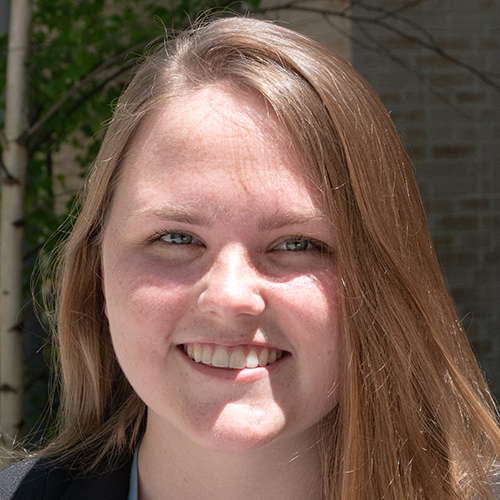 |
Jordan Street ’20Anthropology, Wellesley College Advisor: Luis Velásquez-García, Principal Scientist, Microsystems Technology LaboratoriesDirect Supervisor: Ashley Beckwith, Graduate Student, Mechanical EngineeringSponsor: Shell International Plant cell culture for homogeneous tissue generation Accurate plant culture models are vital for understanding and improving the production of biomass. They make it possible to study plant cell development, and to engineer optimal biomass physiologies to improve the efficiency of biofuel production. Common culture systems, including cell suspensions in the liquid medium, often fail to account for mechanical cues that guide cell development in vitro. This hinders the translation of cellular findings to the plant level. The purpose of my UROP project was to develop a protocol for a 3-dimensional culture model in gel media. The protocol that we designed allows for in vitro studies of plant cell development in a model that better mimics the development of plants in nature. In the 3-dimensional models, we observed diverse morphological transformations that are less commonly reported in liquid cultures. I am grateful to have had this opportunity to develop the invaluable skills associated with working on such an amazing project. |
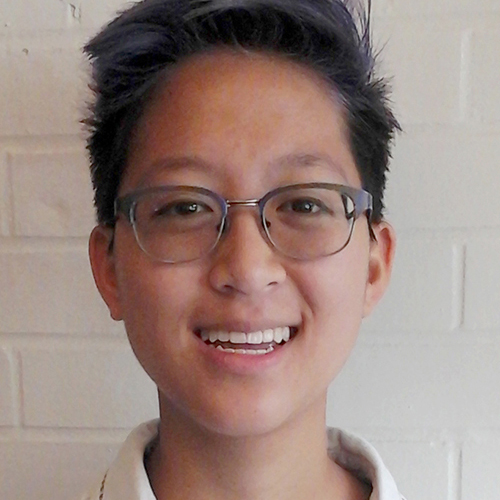 |
Jocelyn Ting ’22Materials Science and Engineering Advisor: Betar Gallant, ABS Career Development Professor, Mechanical EngineeringDirect Supervisor: Mingfu He, Postdoctoral Associate, Mechanical EngineeringSponsor: Lisa Doh Himawan ’88 Evaluating testing methodologies of LiF artificial SEI layers in lithium metal batteries I worked on a paper to make recommendations for more uniform reporting of Coulombic efficiency in lithium (Li) metal batteries. We concentrated on the relatively new field of Li metal batteries that have been modified with an artificial lithium fluoride (LiF) solid electrolyte interphase (SEI). I reviewed the 10 most relevant papers on this topic from the last five years and also made and cycled 30 Li metal coin cells until capacity failure (in four weeks!). I learned the delicate skill of fabricating coin cells in a glove box, and how to create concise, meaningful graphs in Origin. Most importantly, I learned about what it is like to work in a research group every day, and took a deep dive into the field of artificial SEI, which provided me with a greater understanding of what it will take to bring high energy density batteries to their full potential. |
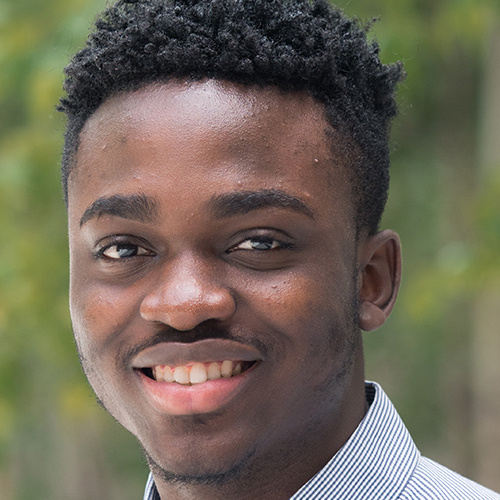 |
Awele Uwagwu ’21Chemical Engineering Advisor: Tonio Buonassisi, Professor, Mechanical EngineeringDirect Supervisor: Ian Matthews, Postdoctoral Researcher, Mechanical EngineeringSponsor: Equinor Study of off-grid solar plus storage systems in Nigeria using learning model Energy access is a huge problem that hinders economic productivity and reduces the quality of life in sub-Saharan Africa and much of the developing world. For my summer UROP, I worked on a computer model that sheds light on how off-grid solar plus storage systems would be implemented in Nigeria. Our model took into account temperature, sunlight for a given area, vendor pricing for solar panels and batteries, and the amount of electricity used to power the unit in question. We were able to identify the optimal system design (panel area and battery capacity), analyze the reliability of the system, and determine the Levelized Cost of Energy (LCOE). We found that, in addition to off-grid solar plus storage systems providing clean energy, the LCOE of these systems are cost-competitive with current alternative-diesel generators. This finding takes us one step closer to tackling the problem of energy access. |
 |
Ava Waitz ’21Materials Science and Engineering Advisor: Jeffrey Grossman, Morton and Claire Goulder and Family Professor in Environmental Systems; and Department Head, Materials Science and EngineeringDirect Supervisor: Thomas Sannicolo, Postdoctoral Associate, Research Laboratory of ElectronicsSponsor: Shell International Developing silver nanowire electrodes for transparent photovoltaics The expansion of solar energy to meet global energy demand is crucial in order to curb greenhouse gas emissions. While opaque photovoltaic (PV) cells currently dominate the solar landscape, transparent and flexible PV technology is an opportunity to increase the harvesting of solar energy in a cost-effective way. Last summer, I worked in the Grossman Group to develop transparent electrodes for these solar cells using networks of silver nanowires. These wires show promise compared to standard transparent conductors because they are cheaper and potentially flexible. I worked to build and optimize a spray deposition set-up for fabrication of these electrodes. I have now started to incorporate them into functioning semi-transparent solar cells. I am excited to continue with this meaningful research. |
 |
Angela Wang ’20Media Arts and Sciences, Wellesley College Advisor: Amy Glasmeier, Professor, Economic Geography and Regional PlanningDirect Supervisor: Darien Williams, Graduate Student, Urban Studies and PlanningSponsor: Shell International Vulnerabilities of SCADA technology in U.S. natural gas pipelines Inspired by the Merrimack Valley gas explosions, our team focused on analyzing U.S. natural gas pipeline systems for incidents of human error. By framing human error within the organizational hierarchy, we were able to look for persistent vulnerabilities within the system. I chose to investigate how equipment malfunctions in SCADA (Supervisory Control and Data Acquisition) software can be linked to human error. Since SCADA remotely controls U.S. natural gas pipelines, malfunctions can be exacerbated by pipeline operators who are over-reliant on the SCADA system and do not have the adequate training to enable them to take over when problems arise. Doing this research has shown me how large-scale technology now connects us to our most basic infrastructural needs, and that we can combat over-reliance on SCADA software by emphasizing the importance of humans taking an active role in energy management. |
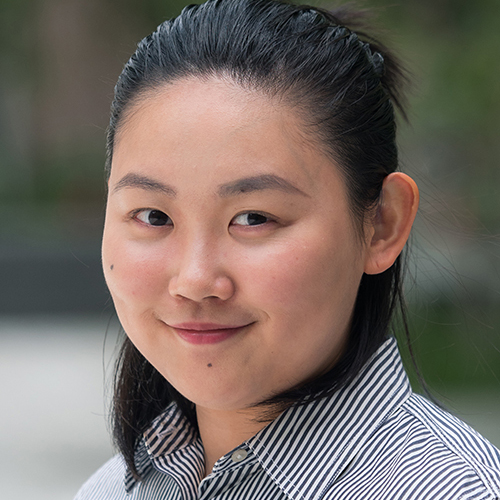 |
Shiyan (Yeva) Yin ’21Business Analytics Advisor and Direct Supervisor: David Hsu, Associate Professor, Urban and Environmental PlanningSponsor: Alfred Thomas Guertin ’60 Political spending on utility regulators The purpose of the project that I worked on during my UROP is to investigate the influence of U.S. political spending on public utility commissions and how it impacts the utility rates that consumers pay. This is an important topic on which to conduct research because citizens deserve to know if the rates set by public utility commissions are truly “fair.” I gathered election data for each state over the past 20 years to build a utility commissioners’ career background information dataset and analyze the decisions of rate cases. Although we did not get to conduct a comprehensive data analysis, I was fascinated by seeing the revolving door phenomenon through the commissioner-utility relationship. When investigating the campaign finance data, I was shocked to learn how much the commissioners’ decisions could be influenced by political spending. This UROP has strengthened my data processing skills and, more importantly, helped me understand the political mechanisms at work within the energy industry. |